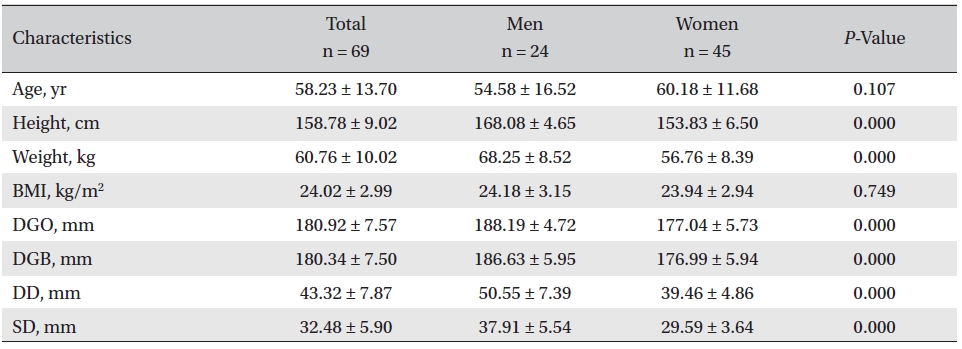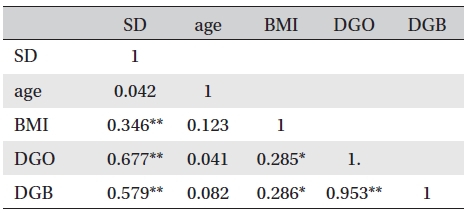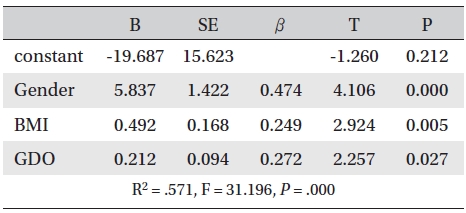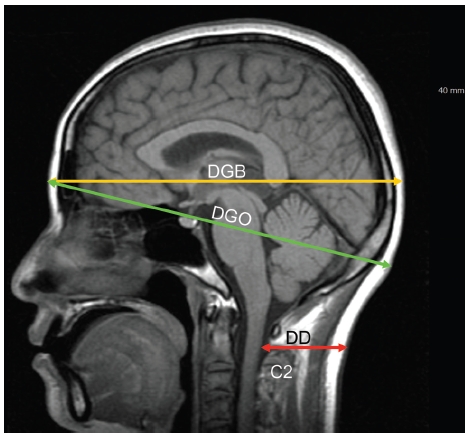


Acupuncture is increasingly popular with patients because of both its effectiveness and low risk [1]. Acupuncture is a very safe intervention in the hands of competent practitioners [2]. The inappropriate application of acupuncture may damage surrounding tissues or organs due to the penetration of the acupuncture needle, may cause a pneumothorax or cardiovascular trauma, and may cause a bacterial infection like endocarditis [3, 4]. Therefore, an exact depth of penetration is recognized to be essential for acupuncture, and finding the depth of the acupoint that is safe and can have the most appropriate effect is important. There have been various studies on the safety depth of acupuncture. Gender, age, body weight, body length, body mass index (BMI), direction and angle of the magnetic needles, right/left side points, and different measuring methods have been identified as factors affecting the safety depth [5]. The dangerous depth of Fengfu, which is the sixteenth acupoint of the Governor Vessel Meridian, has been reported to differ with gender, to have significant correlations to weight, BMI and neck circumference, but no correlation to Tong Shen Cun or height [6].
Yamen, which is the fifteenth acupoint of the Governor Vessel Meridian (GV15), is located superior to the spinous process of the second cervical vertebra. It has been reported to have effects for treating sudden deafness or headache [7, 8]. Recently, regarding cerebral hemodynamics, acupuncture at GV15 was reported to increased regional cerebral blood flow [9], so new light has been shed on its effectiveness. GV15 is anatomically close to the medulla oblongata, so finding the safety depth of the acupoint is very important; however, few studies on the safety depth of GV15 have been performed, and especially, there has been no research on Koreans. This study tried to measure the safety depth of GV15 by using MRI scans and to analyze the factors affecting the safety depth through multiple regression analyses.
This study was carried out for patients who had a brain MRI scan while visiting Jeonju Wonkwang Hospital, Korea, from November 2001 to March 2013. This study was approved by the Institutional Review Board (WKUJJ-IRB-2013-0003) at Jeonju Wonkwang Hospital. These patients mostly had scans to detect brain diseases such as ischemic stroke, cerebral hemorrhage, cerebrovascular malformation, brain cancer, acute brain injury, etc.
Individual patients’ age, gender, body weight and height were taken from their chart histories. The distance from the glabella to the occipital protuberance (DGO), the distance from the glabella to the back of the head (DGB) and the dangerous depth (DD) were measured from the sagittal view of the MRI images. The DGO is the shortest distance from the glabella to the occipital protuberance, the DGB is the horizontal distance from the glabella to the back of the head, and the DD is the horizontal distance from the skin’s surface at GV15 to the spinal dura mater. The safety depth (SD) was defined as 75% of the DD (Fig. 1). In accordance with the World Health Organization Standard Acupuncture Point Locations, GV15 was defined as the posterior of the neck, the depression superior to the spinous process of the second cervical vertebra, on the posterior line.
Data was analyzed by using SPSS statistical software, version 20.0. All continuous variables were expressed as means ± standard deviations. The
The 69 subjects consisted of 24 males and 45 females. As a result of the

Dependences of anthropometric measurements and magnetic resonance imaging parameters on gender*

Associations of safety depth with age and anthropometric variables by using correlation analyses
Multiple regression analyses using the enter method were carried out to evaluate the associations of the variables with the SD. Because multicollinearity existed between the DGO and the GDB, the DGB was eliminated, and the other three variables were used. The Durbin-Watson value to check independence was 1.953 (data not shown), the regression model was judged to be appropriate. The model suggested that the SD was significantly associated with gender (

Associations of safety depth with anthropometric variables by using multiple regression analyses
This study analyzed the correlations between the length of the SD and age, BMI, DGO, and DGB to analyze the factors affecting the SD of GV15. The SD of GV15 showed a significant difference by gender. This was consistent with a previous report that the DD of GV15 differed significantly by gender [10]. The SD of GV16 Fengfu on the head close to GV15 Yamen was deeper in males [6], and on the chest, the SD was deeper in females than males [11]. Also, the Deqi depth on the abdomen, back, arm or leg was deeper in males than females [12]. Therefore, gender is considered as a factor affecting the SD not only for GV15 but also for other acupoints, yet no significant differences between gender for acupoints on the low back have been reported [13]. The total soft tissue volume of the neck was larger in men than in women, and this difference was due to non-fat soft tissue, the actual volume of fat being similar in the two sexes [14]. Thus, the differences in the SDs for acupoints on the head and the neck by gender might be assumed to be due to non-fat soft tissue, especially muscle thickness.
Our multiple regression analyses showed that BMI, as well as gender, had a significant effect on the SD. Although there have been no studies on the correlations between the SD at GV15 and the BMI, correlations of the SD at GV16 with body weight and BMI have been reported [6]. In addition, significant differences in the Deqi depth and the SD on the chest and the back by body weight have been reported [13], as has significant differences in the T/S ratios (therapeutic depth/safety depth) for the abdominal acupuncture points by body weight and waist circumference [15].
The DGO, as well as the gender and the BMI, had a significant effect on the SD. In addition, the DGB was excluded from the multiple regression analyses because it had a high collinearity (data not shown). This result means that head length and circumference, as well as other factors, have correlations with the SD, which is similar to results of other studies on the correlations of SDs at abdominal acupoints with waist circumference and of SDs at acupoints on the head with neck circumference. Thus, head size or head circumference should be considered when using acupuncture. Also, the correlation between Tong Shen Cun and of the SDs at acupoints is still controversial [6, 13]. Because this study was based on retrospective measurements on MRI scans, future studies that measure the head circumference and the Tong Shen Cun of patients and that look into their correlations with the SD are necessary.
This study suggests that gender, BMI and DGO may be important factors when the SD of GV15 is considered clinically through a multiple regression analysis of GV15.



